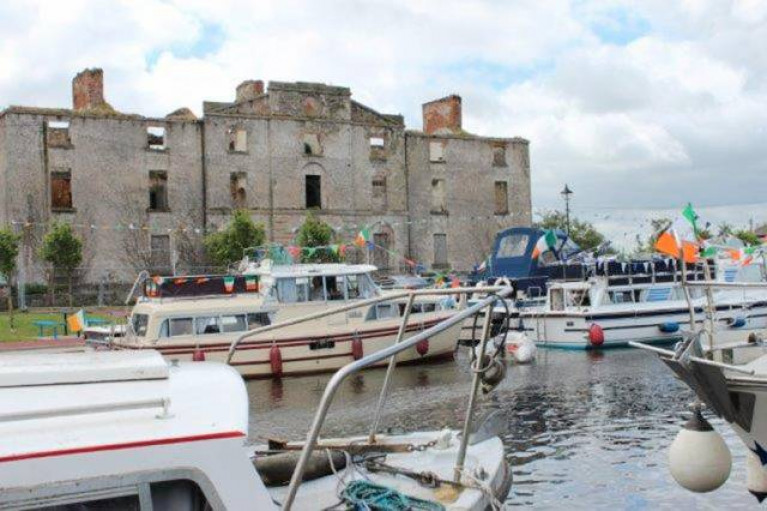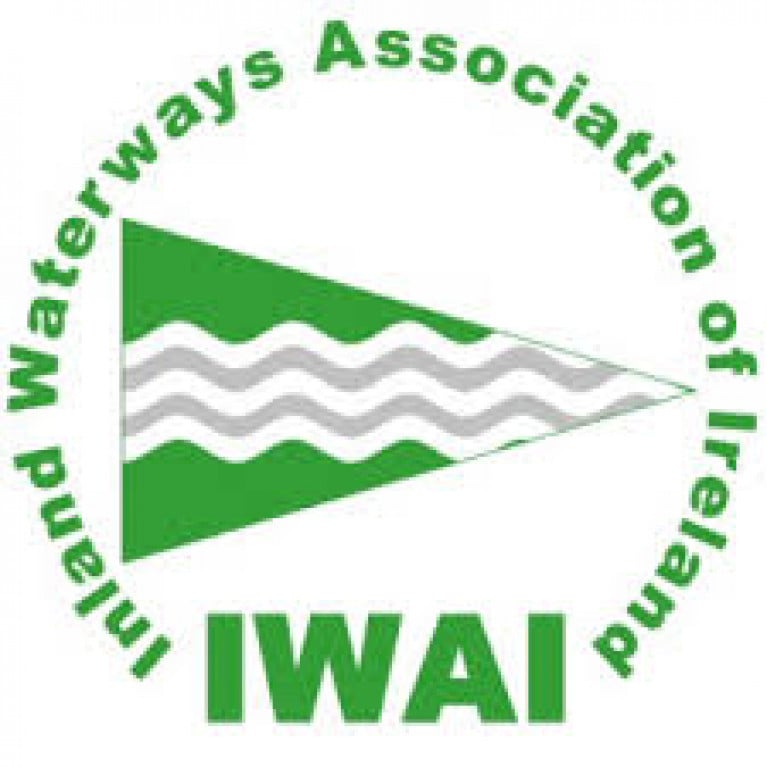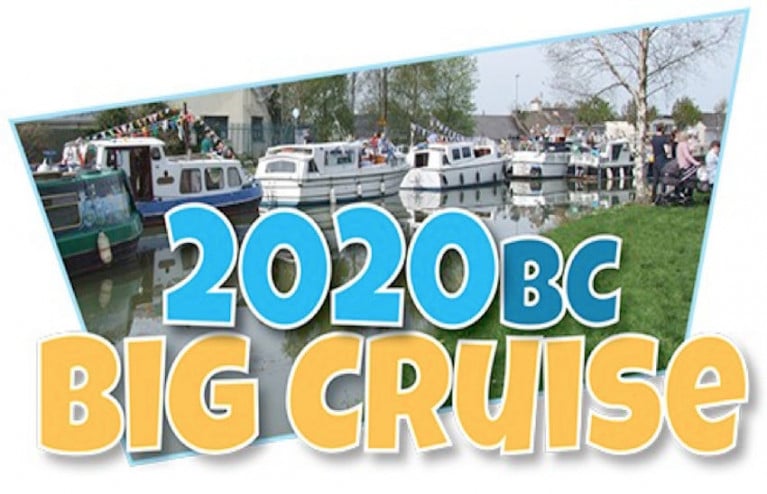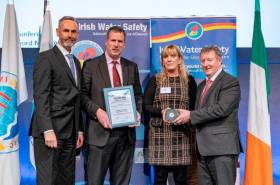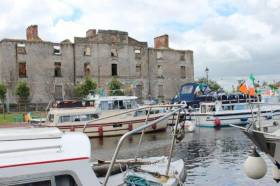Displaying items by tag: IWAI
The Inland Navigations of Ireland Historical Society will hold its annual conference for 2023 on Saturday 25 March at the Inland Waterways Association of Ireland’s (IWAI) Dunrovin building at Coosan Point near Athlone.
Topics on the agenda include post-Covid updates for Ireland’s inland waterways from the IWAI and the Heritage Boat Association; the Waterways Ireland archive; the Barrow Navigation; and managing the archaeology of the Shannon.
Admission is €15 paid at the door (exact change in cash only). Tea/coffee and lunch will be provided — but bring a mug!
This conference is organised by IWAI Offaly in partnership with the IWAI, Heritage Boat Association and Waterways Ireland. The conference agenda is attached below.
Inland Waterways Association of Ireland Cited in Seanad Debate on Ireland’s Tourism Sector
The Inland Waterways Association of Ireland’s (IWAI) engagement with stakeholders to promote tourism on the inland waterways was cited as a key example recently during a Seanad debate on the hospitality sector.
Senator Aisling Dolan (Fine Gael) said that the IWAI “has brand new branches around the River Suck along the Beara-Breifne Way. It is trying to promote tourism along the waterways by working with Waterways Ireland and engaging with Fáilte Ireland.”
The senator noted this in the context of community and industry groups in more rural areas attempting to build bridges to develop their local tourism and hospitality offerings in the absence of chambers of commerce and other industry clout.
“We have community groups that have the clout. How can these community groups be supported in trying to promote tourism in their local areas?” she asked.
More on the Seanad debate from Wednesday 22 February can be found on KildareStreet HERE.
Inland Waterways Association of Ireland Will Open New Headquarters on Lough Ree This Week
June 25th 2022 will be an historic day for the Inland Waterways Association of Ireland (IWAI) with the official opening of its new Headquarters at Dunrovin, on the shores of Lough Ree, Coosan Point, Athlone.
IWAI HQ Dunrovin as the building will be known is co-located with the new RNLI permanent Lifeboat Station, recently commissioned. For the last six years, IWAI has worked with RNLI to deliver a strategic partnership project with the RNLI resulting in a permanent Lifeboat Station and an IWAI building on the site where IWAI was born in 1954.
Dunrovin is steeped in waterways history, being the spiritual home of IWAI. In 1997 Cynthia Rice, widow of Colonel Harry Rice and lifelong member of IWAI bequeathed Dunrovin the property and site to IWAI Athlone and the Association. As part of her Will, Cynthia’s bequest stated that the property should be “used in perpetuity as a clubhouse and meeting house for members”. Cynthia’s Will also mentioned the RNLI as an organisation close to her heart. She spent many years fundraising for the RNLI annually with her husband’s niece and close friend Rosemary Furlong, another lifelong member of the IWAI.
Dunrovin, was the summer house of Harry Rice and his first wife Beatrice Geoghegan, (fondly known as Peggy) and his daughter Betty (born 1924). Beatrice died in 1951. Two years later in 1953 Harry married Cynthia, his daughter’s best friend and for many years they lived in Dunrovin. It was here that Vincent and Ruth Delany and Harry and Cynthia Rice devised and hatched plans and a way forward in setting up the Inland Waterways Association of Ireland, now almost 70 years old.
While Harry died in 1964, the property was used by his wife until her death in 1997. To safeguard the property over the intervening years, it was rented out to various tenants. The site was and is frequently used by several water-based sports clubs with the Athlone Boat Club holding their annual regatta at Dunrovin as their base. Athletes practicing for the Triathlon use the waterways directly in front of Dunrovin for their open water swim. IWAI Athlone held many branch meetings in the original dwelling that was the home of the Rice’s. Many active and committed members of IWAI Athlone gave their time and energy ensuring the property did not fall into disrepair and disuse. Over the years, it has remained a primary goal of the Association to honour and carry out Cynthia’s wishes. Now, twenty-five years later, the Association has fulfilled her wishes and has done justice to her very generous bequest and honouring Athlone’s, the Shannon’s, and Ireland’s inland waterways heritage.
The Inland Waterways Association of Ireland (IWAI) is a voluntary body representing over 3,500 enthusiasts, with 25 branches across the island of Ireland.
This year’s Shannon Harbour Canal Boat Rally, which had been scheduled for 19-21 June, has been postponed over the coronavirus pandemic.
Ian Skelton, Hon Sec of the Inland Waterways Association of Ireland’s Shannon Harbour branch and who confirmed the news, said it is hoped to have some sort of gathering in the rally’s stead later in the year if the situation improves.
This would have been the 49th edition of the rally, the running of which was taken over by Shannon Harbour IWAI two years ago.
Elsewhere, the Barrow Awards 2020 have been cancelled due to the ongoing Covid-19 situation, as reported by John Dimond of Barrow IWAI.
The award scheme promotes groups all along the River Barrow to focus on and improve their river frontage and acknowledges their efforts.
The awards have been supported by the county councils adjoining the Barrow, chaired by Eileen O’Rourke of Carlow County Council and with the backing of Waterways Ireland.
Personal Use Of Vessels For Leisure Purposes Now Prohibited
In a statement to its members, the Inland Waterways Association of Ireland (IWAI) confirms that personal use of vessels for leisure purposes is now prohibited under the Government’s added restrictions on movement to combat Covid-19.
“All citizens on the island must now stay at home except in the most limited of circumstances as determined by the governments in both jurisdictions,” said the preservation group for all of Ireland’s working inland waterways navigations.
Following the Taoiseach’s address to the nation last night (Friday 27 March), the IWAI also emphasises that “face-to-face meetings, such as branch meetings, must be postponed” until at least after Easter Sunday.
“Where branch committees wish to continue to perform their duties, this can only be done using technology to manage meetings rather than face-to-face … All planned indoor gatherings must be postponed.
“All outdoor gatherings are banned, therefore all cruises in company, rallies and work parties must be postponed.”
The Inland Waterways Association of Ireland has cancelled its Council Meeting scheduled for this coming Saturday, March 7th.
IWAI President Alan Kelly has advised that due to the increased risk posed by COVID-19 (Coronavirus) and that cases of Coronavirus have now been
confirmed North, South, East and West it has been decided to cancel the IWAI Council meeting scheduled for this coming Saturday, March 7th.
The IWAI says it is keeping the situation 'under review' and a decision made about the AGM (scheduled for April 25) at a later date.
New Year’s Day Flotilla To Launch 2020 Big Cruise Calendar For ‘Green & Silver’ Inland Navigations
The Inland Waterways Association of Ireland (IWAI) is ringing in the New Year with the launch of its 2020 Big Cruise calendar of events on the inland waterways of the Green & Silver route.
A flotilla of light and fast boats set off at pace on the River Liffey from the sea lock at Grand Canal Dock to Seán Heuston Bridge below Heuston Station this lunchtime (Wednesday 1 January) to kick off the 2020BC initiative.
The date also marks the 60th anniversary to the day the Grand Canal was closed to commercial traffic by CIÉ.
2020BC will centre around a calendar of waterside community celebrations and events to which boaters and other waterway users can travel next year.
This reflects the navigation circuit being very much ‘open for business’ for leisure, pleasure and amenity use.
The 2020BC project is being co-ordinated for IWAI Dublin by longtime waterways advocate Mick Kinahan with support from IWAI’s Kildare, Offaly, Shannon Harbour, Royal Canal and Barrow Branches.
Today’s flotilla also carries some offerings from the Grand Canal to Heuston Station — symbols from locations along the canal’s length, of both past and present commercial and leisure activities.
Little known outside the boating community, the Grand Canal is also part of what is known as the Green & Silver: a navigation route comprising the Royal Canal, Camlin River, River Shannon, Grand Canal and River Liffey — and one that the IWAI is keen to promote during 2020BC and beyond.
IWAI president Alan Kelly said: “We are fortunate in IWAI to have experienced volunteers who are fully committed to the promotion of our waterways for the common good and the socio-economic benefit of all.
“We also have an excellent working relationship with Waterways Ireland and with Government departments, local authorities, development associations and community organisations all along the inland waterways network.
“We look forward to 2020 being a year of further positive engagement with all of our waterways partners to promote the development and improvement of our waterways.”
Jim O’Riordan, IWAI Dublin chairperson, added: “IWAI Dublin look forward to 2020BC and are grateful for the support from our peer IWAI branches around the inland waterways network for the project.
“We also want to thank Waterways Ireland who have been involved in helping us plan today’s launch and events for the coming year; and Clontarf and Poolbeg yacht clubs among others who have assisted arrangements for the launch flotilla.
“For 2020BC, what we are promoting is not just about boating, we intend to work with as many communities as possible to develop their interests further in the inland waterways in their vicinities and look forward to meeting many new waterways friends.”
Full details of events for 2020BC will be made available on the IWAI website.
‘Green & Silver’ Canal Rally In Works For Summer 2019
The Dublin branch of the Inland Waterways Association of Ireland is working on plans for a rally this summer inspired by the Green & Silver route.
2019 marks the 70th anniversary of the publication of Green & Silver by LTC Rolt, a book which recounted an influential voyage in 1946 from the Shannon to Dublin along the Grand Canal, then back to the Shannon via the Royal Canal, including a turn north to Lough Key and south again to Lough Derg.
The 356km inland waterways route has since become known as the ‘Green & Silver Challenge’ and has been championed by IWAI Dublin since the full navigation of the Royal Canal was reopened in 2010.
Now the Dublin branch is looking to encourage as many boats as possible to join the rally from this May “to show the canals are being used and not just a pretty water feature”.
A provisional date for boats heading to Dublin on the Royal Canal to meet at the 12th Lock in Castleknock has been set for Friday 3 May, with boats on the reverse route along the Grand Canal to meet at Lucan’s 12th lock on Friday 10 May.
Boats would converge on the River Liffey for a two-day rally on the weekend of 18-19 May, with boats heading out on the Grand Canal the following weekend (25-26 May) and on the Royal Canal the week after that (1-2 June).
Prizes are being commissioned for boats that have completed the trip several times, with more on this and confirmed dates for the rally to come from IWAI Dublin in the coming weeks.
IWAI Receives National Irish Water Safety Award
The Inland Waterways Association of Ireland (IWAI) was honoured this week at the Irish Water Safety National Awards.
The Community and Social Responsibility Award was in recognition of the work by the association and its members in supporting Irish Water Safety’s community work and water safety in general on Ireland’s inland waterways.
The award was presented at Dublin Castle on Thursday 29 November by Seán Canney, Minister of State at the Department of Rural & Community Development.
IWAI president John Dolan, speaking after the presentation, noted that it was a great honour for him and honorary secretary Kay Baxter to receive such an award on behalf of all IWAI members both past and present for their work in this area.
Dolan also stated that he felt privileged and humbled to be present with so many other voluntary organisations, individuals and members of the rescue and security services who have given so much.
That includes those receiving Long-Service Volunteer Awards for teaching swimming, water rescue and survival skills in communities nationwide, and the rescuers who received recognition with the Just in Time Rescue Award in appreciation for saving so many lives in the past year. Irish Sailing also received an award for its support of Irish Water Safety's communuty work.
Echoing the minister’s speech at the awards, the IWAI agrees that it only takes seconds for tragedy to strike and this can so easily be avoided if people learn about the hazards and take responsibility for their own safety, including wearing lifejackets when on or near the water.
The IWAI is a voluntary body representing over 3,500 enthusiasts, with 23 branches across the island of Ireland.
Shannon Harbour Canal Boat Rally Is Back On The Agenda
#Heritage - The Shannon Harbour Canal Boat Rally will go ahead this month, despite reports of its recent cancellation.
Afloat.ie has learned that a new voluntary group has taken over the hosting of the rally, after Inland Waterways Association of Ireland (IWAI) Shannon Harbour branch chair Damien Buckley announced it would no longer be running.
Gerry Burke of the IWAI’s Lough Derg branch led the charge to maintain the tradition of the heritage event during the recent Jamestown Heritage Festival in Kildare.
It means 2018 will indeed mark the 47th edition of the Shannon Harbour Canal Boat Rally, which will take place over the weekend of Friday 15 to Sunday 17 June.


























